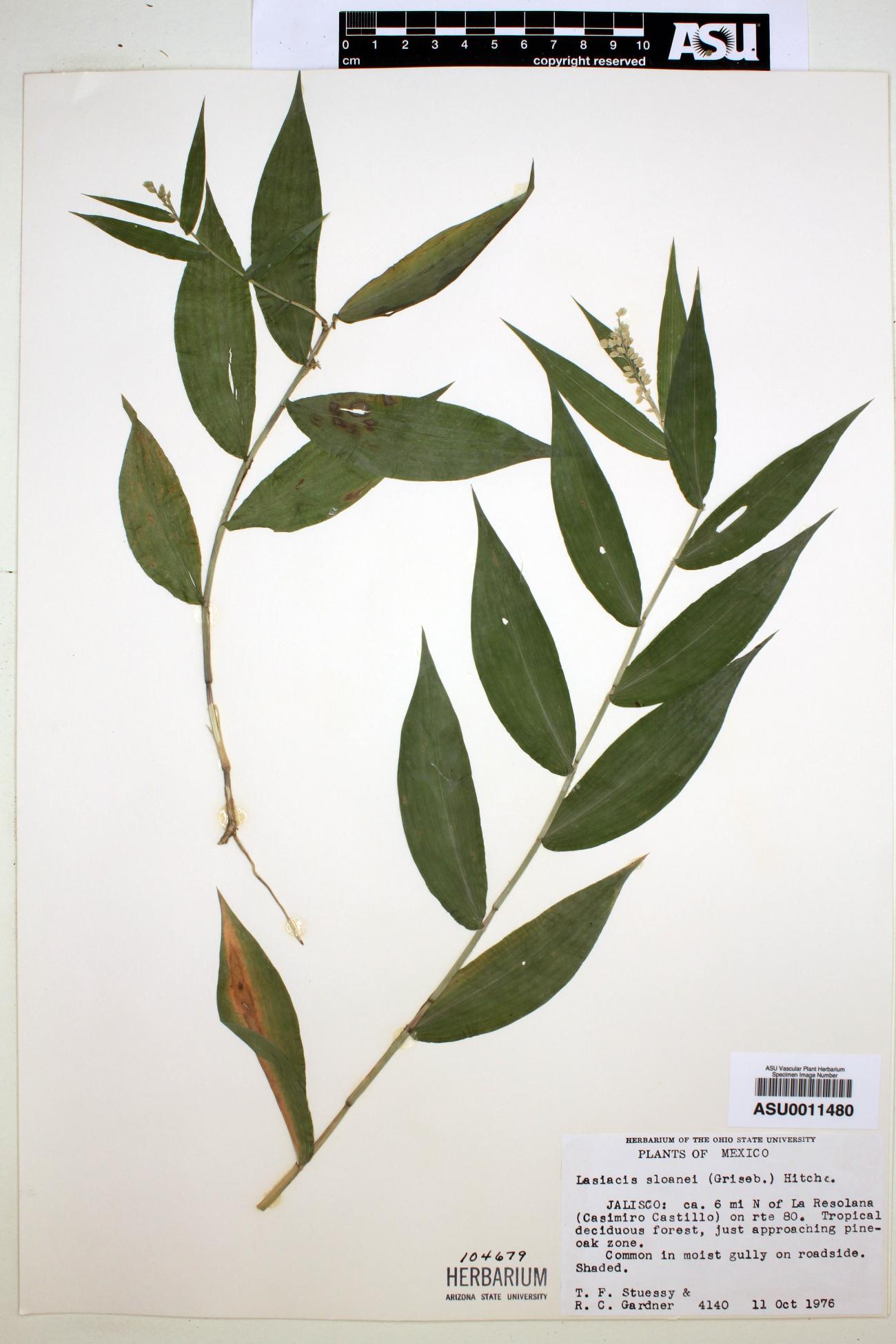Lasiacis
|
Family: Poaceae |
Plants perennial (rarely annual); cespitose. Culms 0.5-8 m, weakly lignified, erect, arching, climbing, or decumbent, rooting at the nodes. Sheaths open; ligules membranous, sometimes ciliate; pseudopetioles sometimes present; blades linear to ovate, bases slightly to strongly asymmetric. Inflorescences open or contracted panicles, rachises usually visible, even distally, spikelets attached obliquely to the pedicels; disarticulation below the glumes. Spikelets subglobose to globose, with 2 florets. Glumes membranous, apices lanate pubescent, abruptly apiculate; lower glumes 1/3-2/3 as long as the spikelets, 5-13-veined, bases saccate, margins overlapping; upper glumes about as long as the upper florets, not saccate, 7-15-veined; lower florets sterile or staminate; lower lemmas membranous, apices lanate pubescent, abruptly apiculate; lower paleas present, sometimes reduced; upper florets stipitate, bisexual, appearing to be mucronate or acuminate; upper lemmas indurate, usually broadly elliptic to obovate, margins enclosing the edges of the paleas, apices obtuse, somewhat woolly pubescent, usually dark brown at maturity; upper paleas similar to the lemmas, but saccate below and gibbous above. Caryopses plano-convex, ovoid, or nearly orbicular; embryo about 1/2 as long as the caryopses; hila oblong to nearly round. x = 9. Name from the Greek lasios, woolly, and akis, point, referring to the tuft of wool at the apex of the spikelets. |

